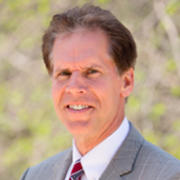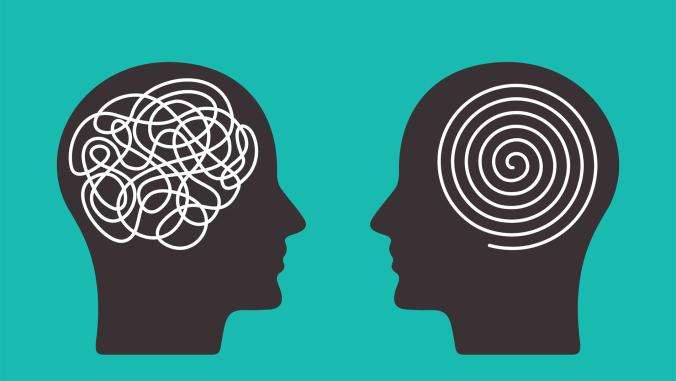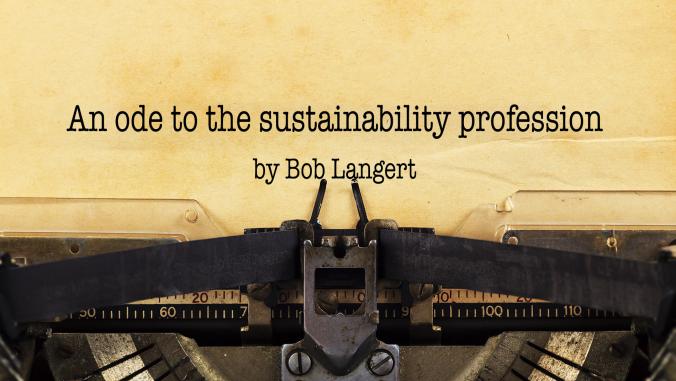10 Minutes with Erin Meezan, Interface
The sustainability lead for the iconic carpet company lays the groundwork for changing the culture.

This column is about the "how" of sustainable business. At the practical level, how do leaders make change happen? Erin Meezan is chief sustainability officer at Interface. It’s amazing that in the past 20 years, Interface is the one and only company recognized each year as a leader in the annual GlobeScan survey. I explored the notion of culture with Erin, and how she and others at Interface keep their culture dynamic and keep sustainability at its core.
Bob Langert: Why and how did Interface focus on creating its special culture?
Erin Meezan: My observation is that generally many companies who started out focused on sustainability really didn't have much awareness on how important creating a culture of people focused on sustainability really was. In the early days, many of us did not make those investments trying to shift employee mindsets, to try to really broadly engage our associates. Many of us just started with the need to do something in the business to change, such as an unsustainable product.
Interface’s sustainability culture came by happenstance. It was an interesting time (early 1990s) in the business when our founder, Ray Anderson, stepped down as the leader of our American business and he brought in a potential successor. This leader increased the level of communication with employees. He did a lot of listening. He got very clear on the company's strategic vision.
Shortly thereafter, Ray Anderson had the epiphany that he had on sustainability and really focused on adding an environmental focus to our business. What we realized in retrospect was our new leader was doing all this great cultural work to get our employees reenergized and reconnected to the business. He did that right before this sustainability vision by the founder landed. These priorities merged and it had the effect of really galvanizing our people around this new sustainability vision just completely by happenstance.
As a result of that, we had people who were reconnected and reengaged in the business, excited to do something. That really created the fertile ground for the mission to take hold.
Langert: Since then, how have you kept your culture dynamic and relevant?
Meezan: As we got deeper into applying sustainability at Interface, we saw how connected people were becoming. So, over the years, we've been really purposeful about doing things like bringing in new mindsets. As Amory Lovins often says, the best way to have new ideas is to stop having the old, bad ones first.
For us, it was a series of things like training all of our global employees on The Natural Step principles, making sure that our employees understood systems thinking, bringing in outside thinkers and speakers, and trainers so that our employees could understand biomimicry.As we got deeper into applying sustainability at Interface, we saw how connected people were becoming.
Langert: Is it possible to measure culture "success"?
Meezan: We haven't always been really good in the business about measuring that. In fact, I would say for 15 years, we didn't. One of the things that our new CEO, Jay Gould, who came in 2016, brought with him was this diligence around measuring the culture. He's been very focused on beyond-anecdotal, beyond-informal cultural measurement. Do our people see where they can have a role to play? Do they feel connected to the mission? We use the Denison Organizational Culture Survey to measure how engaged our employees are with our mission. The survey measures four key drivers of high performance: mission; adaptability; involvement; and consistency. This information gives us a benchmark and helps drive our strategy around employee engagement.
Langert: How does your team influence culture development?
Meezan: I think about it in three ways. First, you have to make sure your people have awareness. Then that builds to understanding awareness — how I can actually take action in my job, what I can do to actually advance sustainability in my role. Then the last is action. It's really hard to build a strategy unless you know what percentage of your population fits in those three areas.
It was widely said that the vast majority of the people at Interface really understood the sustainability mission when I came in the early 2000s. I didn't have data to prove that but I had a really good sense of interacting with colleagues at all levels who really understood sustainability. We had official roles in many layers of the organization that were sustainability champions or people who had sustainability in their role.
What was missing, however, and what we've really been focused on, is the next generation of Interface associates who come into the business post-Ray Anderson. We have the challenge of keeping people here, but at some point the organization evolves. Many of the leaders here when Ray ran the business have retired. We have the next generation to bring on board with our mission.
At some point, we will hit a place where lots of people are going to be new to the organization who didn't know Ray Anderson and didn't live through the transition.
We need to institutionalize that. Currently, we are focused on things like informal training; we are a storytelling culture. We also do it formally through a new learning system that has a focus and a series of modules on sustainability and our mission that tell the story of Interface and take you on our sustainability journey from the beginning.
Langert: How does your organization have the patience to do this? Corporate priorities normally don't allow for such patience.
Meezan: The way I would sell the investment in measuring the culture is twofold. The first is if we're going to spend any level of money on employee engagement, we need to figure out how to target that money so it's incredibly well spent. We need to measure the impact of spending it. If my boss is going to give me $20,000 to spend on employee engagement as a start, I'm going to go ahead and say half of that is going to be around making sure that we make the best investment. You must first have a baseline. It’s crucial for measuring your impact and showing return on investment.
Our surveys and employee engagement strategies aren’t just about a culture of sustainability. In these culture surveys, we're not only measuring their awareness of sustainability. We're also asking them about customer focus, safety and everything else. Engaged employees at work are simply better employees. If our purpose and sustainability mission engages our people, they will be better employees all around and we know they perform better in areas of safety, customer focus and other areas.If our purpose and sustainability mission engages our people, they will be better employees all around and we know they perform better in areas of safety, customer focus and other areas.
Langert: Do you measure how your people live your cultural values?
Meezan: In 2016, we started to be much more diligent about integrating them into performance management. We make sure that you're being assessed on not just achieving your goals and objectives in your annual plan for the year but how you've done that in a way that's consistent with our sustainability values and the values of the business.
Langert: With this data you're getting, can you share anything that's been contrary to what you might have thought?
Meezan: In a good way, what really surprised our CEO when he joined in 2016 was how people in our business understood our sustainability mission more than they did our business strategy. It was shocking for him that our employees did not know our business or growth strategy, but they knew our sustainability mission. Good for our team, but shows we have a challenge in how and how often we communicate the business strategy outside of our sustainability mission.
Langert: You've got to be one of the few companies that probably experienced that, so what is your challenge now?
Meezan: We're the exception to that rule. For sure, more often, people will find the reverse. People don't understand the sustainability strategy. They're not really sure how they connect with it. That's simply not a challenge we have here.
We have a challenge now of going back to all those 5,000 people around the world and actually saying, "We have a new next step in our sustainability journey. We're launching our new mission, Climate Take Back. That's going to require new goals, and targets, and new behaviors, and a new way to engage our employees in taking on that next journey and going after that next strategy."
In some instances, we find ourselves back where we were 25 years ago. But we have a really good base to build on. What's great is we're not introducing sustainability to the organization. We're introducing the second step.
Langert: I'm curious: You haven't had campaigns and attacks against your company, have you?
Meezan: Not on a broad scale. One of the first things we did in the late 1990s was publish a sustainability report, which was the first of its kind. What was significant about it was it actually wasn't what most sustainability reports are nowadays, which is all the good stuff.
It was actually a very true reflection of how terrible the business was, how significant our negative environmental impacts were and what our aspirations were to change it. That really resonated with people to the point where we've always been quite transparent about our negative impacts. And we’ve been very open about our progress and our challenges over the last 24 years.
We've had our critics, such as those that criticize the use of PVC, the material used in our carpet tile backing. We've been very open about how we balance the competing priorities of environmental impacts of materials and circular economy, health and material performance. We’ve had our PVC best practice certified to Green Star and we’re open about disclosing our percentages of virgin and recycled PVC and our future plans to eventually remove all virgin PVC from our supply chain.
This transparency — whether it's product disclosures on all the materials, chemicals that we use or the willingness to engage with some of our critics — has really made it hard to be targeted.





